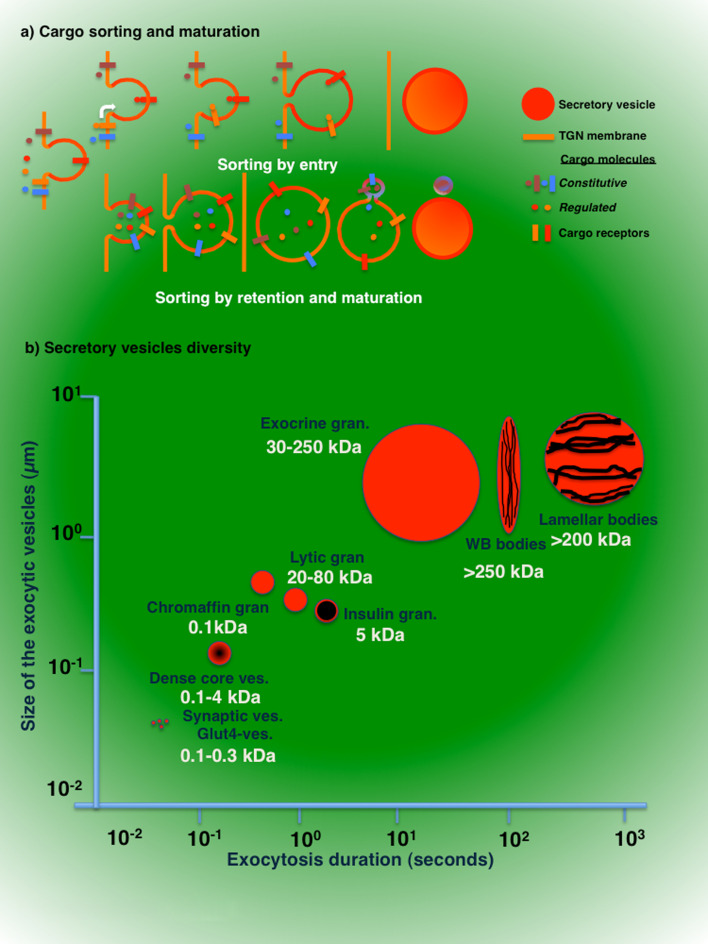Fig. 1.
Cargo sorting into secretory vesicles and their morphological diversity. a Cargo sorting at the TGN. Molecules destined for secretion are sorted into regulated secretory vesicles at the TGN by two main mechanisms. According to the “sorting by entry” model, cargo molecules bind to specific receptors and are sorted into the nascent secretory vesicles, which detach from the TGN and are transported towards the plasma membrane. According to the “sorting by retention” model, cargo molecules freely enter newly formed vesicles that are released into the cytoplasm. These “immature” vesicles undergo an extensive “maturation” step, which is mediated by the removal of specific molecules and membranes via clathrin-coated vesicles. b Correlation between the sizes of the secretory vesicles and the duration of exocytosis. The sizes of the secretory vesicles ranges from 50 nm up to 2–3 μm in diameter and roughly correlate with the molecular weights of the cargo molecules (from 0.1 kDa up to >200 kDa). The duration of exocytosis, as measured from the opening of the fusion pore to the moment in which the secretory vesicle is completely integrated into the plasma membrane, inversely correlates with vesicles size. Small synaptic vesicles complete exocytosis in a time scale ranging from a microsecond to a few milliseconds. Dense core vesicles, lytic and insulin granules complete exocytosis within a few seconds, whereas large secretory granules in exocrine glands last for several seconds up to a minute, and Weibel–Palade bodies, lamellar bodies, and cortical granules last for several minutes

